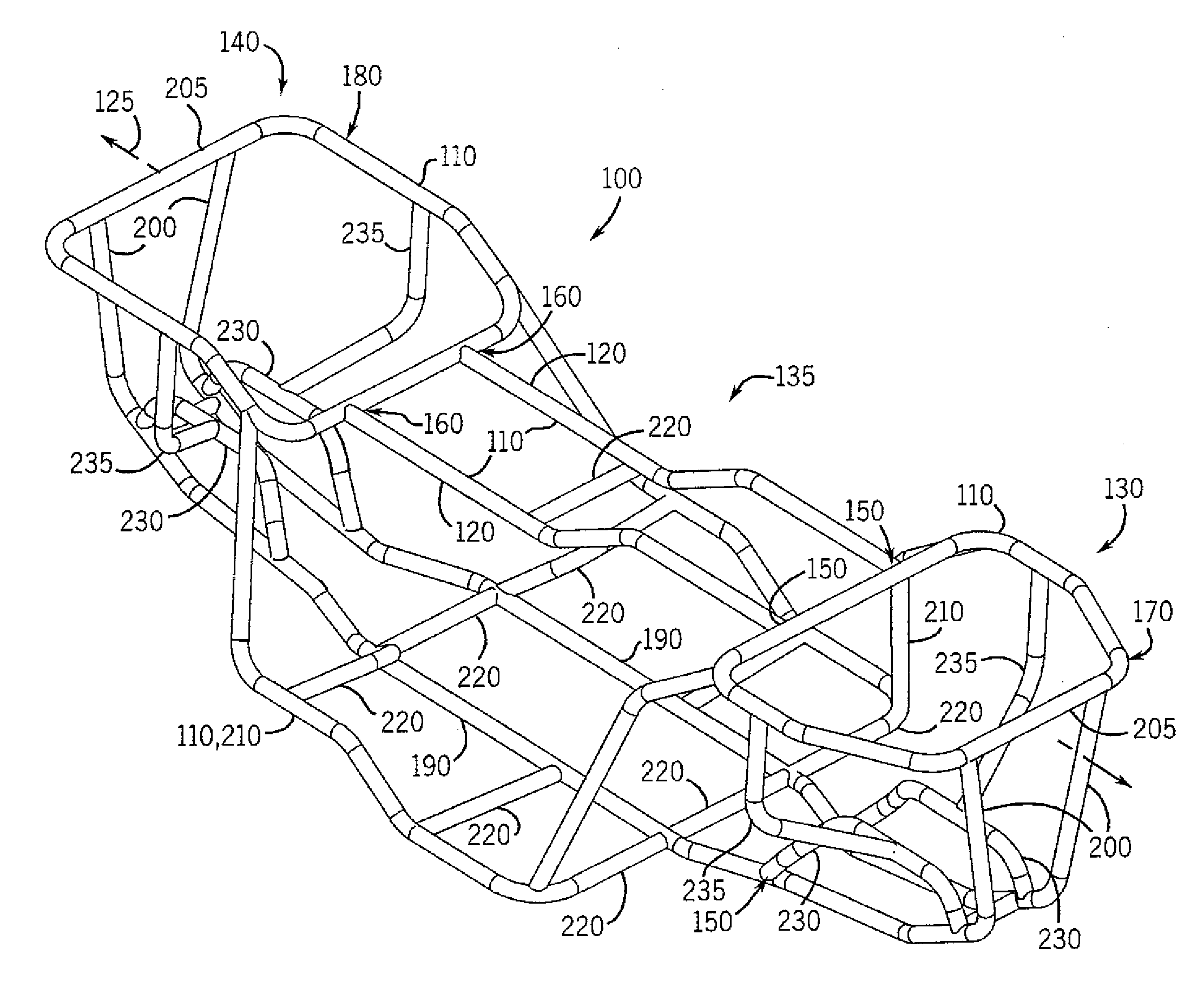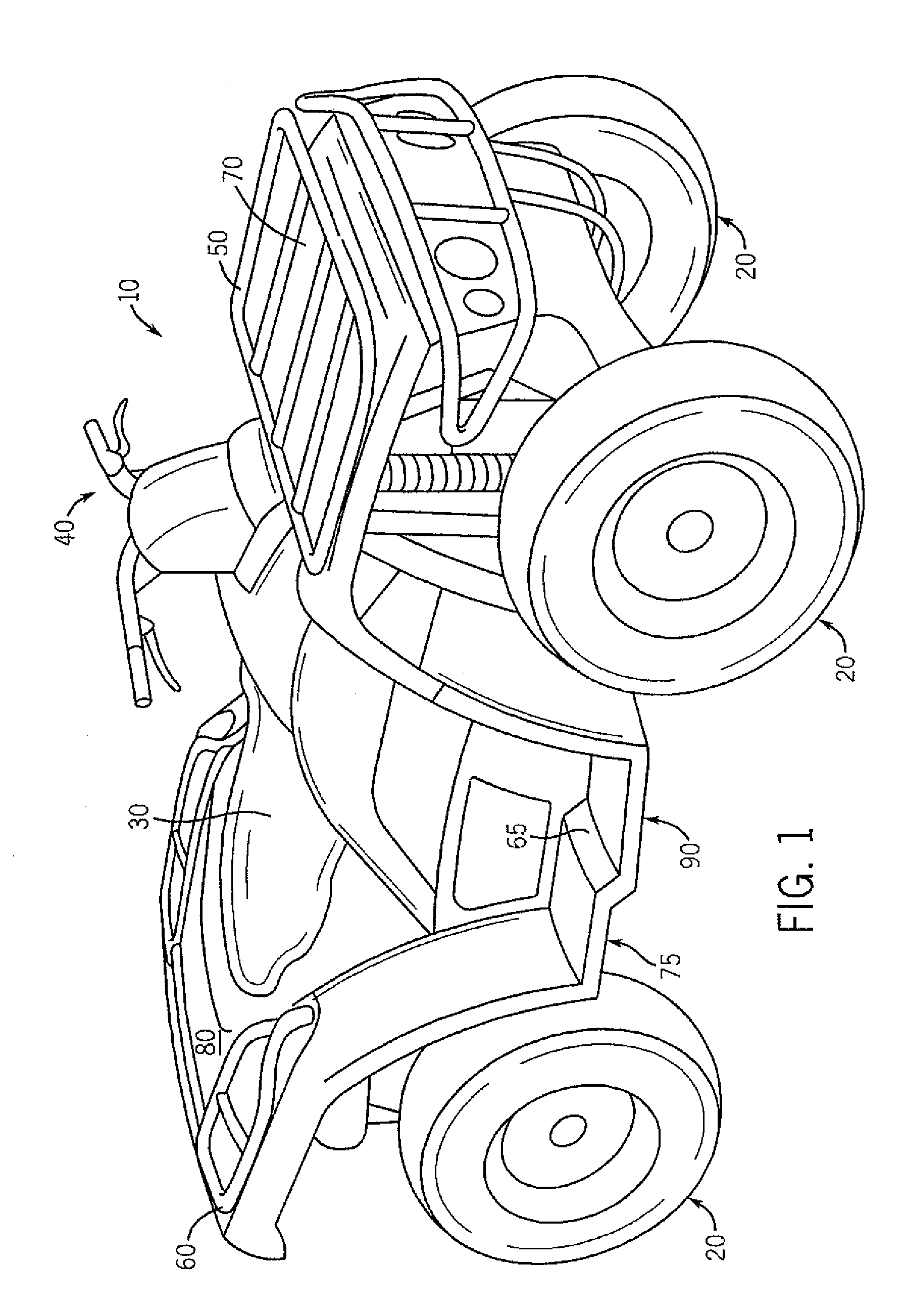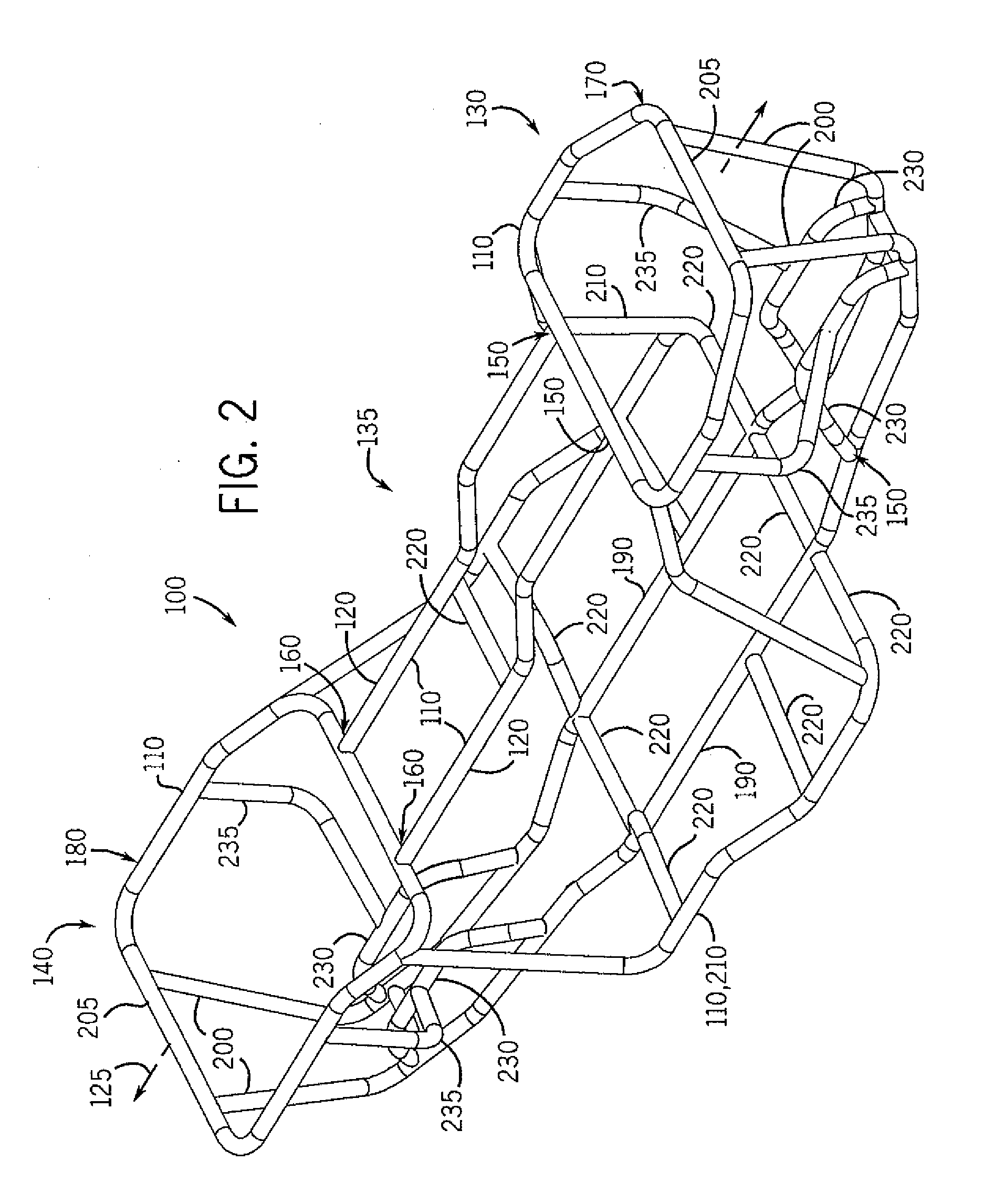As a result, such spaces typically are sufficient only for transporting small items such as a pair of gloves, a tow strap, or an emergency tool kit.
Further, these spaces often are inconvenient to use, for example, because the ports /
doors are located at low or otherwise difficult-to-access locations (e.g., under the seat), or because the
doors are at low levels and lack seals to prevent the entry of water into the spaces.
Although at least one manufacturer, Bombardier, has integrated a somewhat larger, 8 gallon storage compartment into the front end of at least one of its ATV models (e.g., the 1999 Traxter ATV), this storage compartment is still limited in size due to the frame of the ATV and due to the positioning of the front shock absorbers of the vehicle, and there is no comparable storage compartment in the rear of the ATV due to the movement of certain components from the front end of the vehicle to the rear end of the vehicle to provide sufficient space for the front storage compartment.
Also, although at least one other manufacturer,
Arctic Cat, has integrated a somewhat larger, 8-10 gallon storage compartment into the rear end of at least one of its ATV models, this storage compartment is still limited in size due to the configuration of the
vehicle frame and the positioning of the rear shock absorbers, as well as difficult to access insofar as it only occupies a region that is below the cargo rack accessible from behind the vehicle.
Although reduced-size vehicles with the above-described cargo rack and supplemental container features continue to increase in popularity, such conventional vehicles nevertheless have several limitations.
First, the attachment of items / materials to the cargo racks is often challenging due to the need for additional ropes or cords or special clips to fasten the items.
Third, cargo carried on top of the racks can overload the vehicles and / or negatively
impact the vehicles' centers of gravity, which in turn can
impact the performance and safety of the vehicles.
Another limitation of conventional reduced-size vehicles is that the vehicles have little or no provision for floatation.
Consequently, it is not uncommon for an ATV to become submersed completely and ingest water into its engine and cease running, which is a significant inconvenience for the operator and can cause extensive damage to the engine.
Yet integrating sufficient displacement into an ATV for this purpose is difficult given the significant amount of displacement that is required.
None of these satisfactorily solves the
buoyancy problem, however.
With respect to attaching pontoons / inner tubes to the ATVs, the use of such devices is undesirable for a variety of reasons including complications arising from the mounting / installation of those devices, negative effects on vehicle maneuverability when such devices are installed, and storage of the devices when not being used.
Further, as the performance of ATVs is improved, there will continue to be an increased need for braking area, which will tend to drive up wheel size and reduce the
available volume for the tires, which in turn will decrease the tires' overall contribution to
buoyancy.
Further, with an operator
on board, much less any additional weight, conventional ATVs will sink.
In addition to the aforementioned limitations relating to storage capacity and buoyancy, conventional reduced-size vehicles also are inadequate in terms of the manner in which the vehicles respond to accidents / impacts.
More particularly, while the frames of conventional reduced-size vehicles are satisfactorily designed for the purpose of carrying the operator and the various internal vehicle systems, such conventional frames have not been designed with the aim of effectively dissipating energy if the vehicles hit immovable objects such as trees, or with the aim of reducing the effects of side impacts upon the vehicles.
Further, because the struts / tubes, castings and stampings forming the frames of conventional reduced-size vehicles extend from the front ends to the rear ends of the vehicles in proximity to the central longitudinal axes of the vehicles, the frames are exposed to, and not particularly well-suited to resisting, extreme forces and torques that can be applied to the vehicles in certain accidents where the front ends of the vehicles tend to be twisted in directions contrary to those of the rear ends of the vehicles.
In general, conventional frames have not been designed in a manner intended to enhance the
crashworthiness of the reduced-size vehicles.
Further, the cooling systems of conventional reduced-size vehicles also have a number of drawbacks.
With respect to conventional front-mounted cooling systems, for example, such systems are typically vulnerable to clogging in the off-road environment due to contact with mud, leaves, grass,
snow, seeds, etc., and to the possibility of puncture from rocks & sticks.
To the extent that extra guards are utilized to prevent puncture, these can exacerbate clogging events.
Further, in such systems, the radiators
exhaust heat into the mid-sections of the vehicles, which can undesirably heat up the seats and the surrounding bodywork and in some circumstances
expose the vehicle operators (particularly the operators' legs) to undesirable heat.
Additionally, when one such vehicle closely follows behind another such vehicle, the following vehicle can undesirably ingest dirty air expelled by the leading vehicle.
As for conventional rear-mounted cooling systems, such systems are typically vulnerable to puncture and physical harm when the vehicles are driven in reverse.
Such systems also can constrain suspension design and decrease vehicle
system flexibility.
To guarantee sufficient air flow, such systems often require large amounts of space within the vehicles to be dedicated to the communication of air for cooling and long
coolant lines from the engine to the
heat exchanger.
Second, the horizontal placement of the
muffler maximizes the surface area by which heat is convectively transferred away from the
muffler and onto the plastic
fender that is commonly located above it, which can result in significant and possibly undesirable heating of the
fender.
Although some reduced-size vehicles include heat shields above their mufflers and / or highly reflective foil insulators on the bottom sides of the plastic fenders, the fenders and surrounding body work of such vehicles often still can become undesirably hot.
 Login to View More
Login to View More 


